#National Gallery of Modern Art
Text


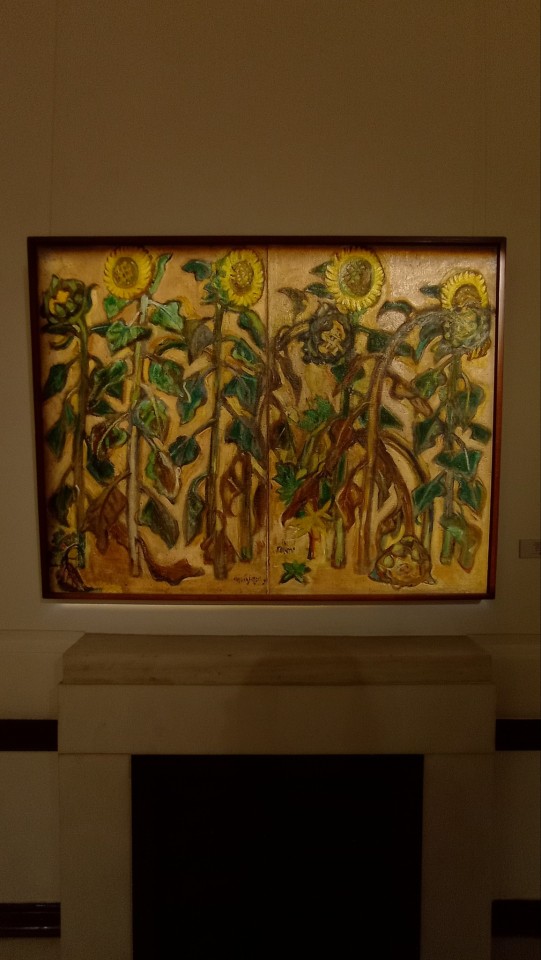


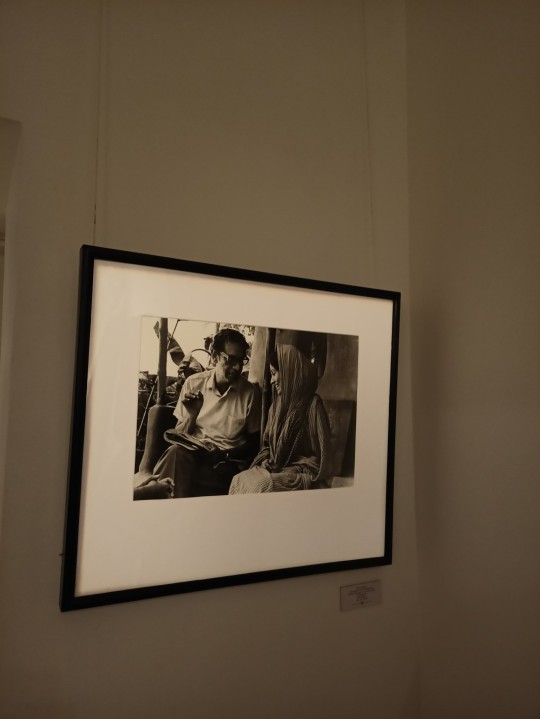


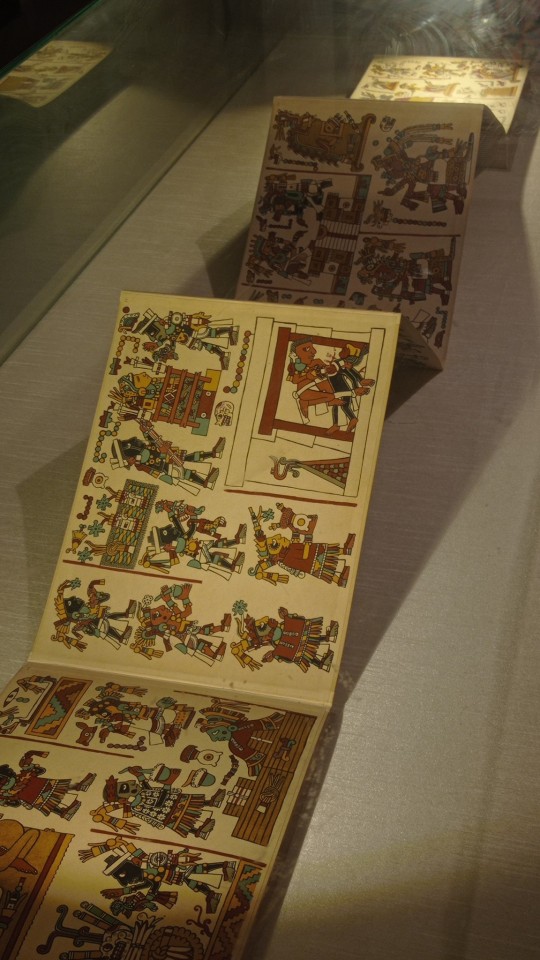
from my gallery (30/12/2023) - museum & cafe date with best friend <3
#national gallery of modern art#new delhi#museums#indian museums#dark academia#dark academia aesthetic#aesthetic#classic academia#classic academia aesthetic#light academia#light acadamia aesthetic#academia#moodboard#nostalgia#desi#being desi#tiramisu#coffee#cappuccino#visual art#graphic art#art history#artwork#art#art museum#chaotic academia#history#gallery#art gallery#mine
96 notes
·
View notes
Text




my ideal date destination. <3
@afro607 i love you so much, boyfriend.♡ thank you for taking me here, it was like a dream.
39 notes
·
View notes
Text
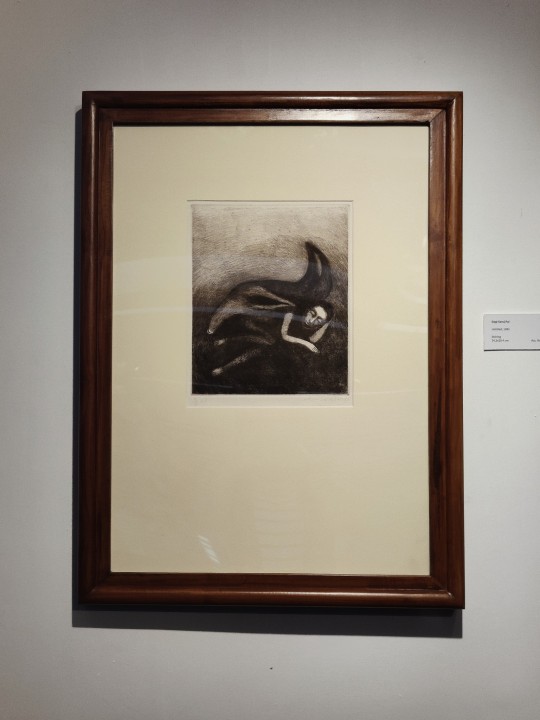
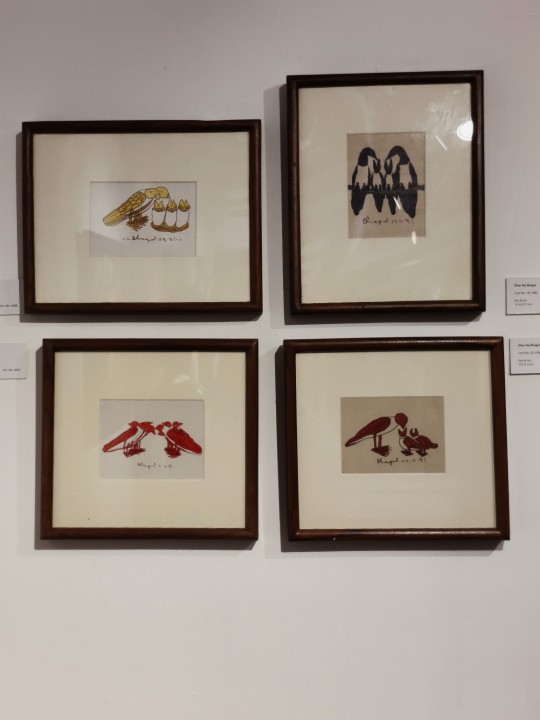
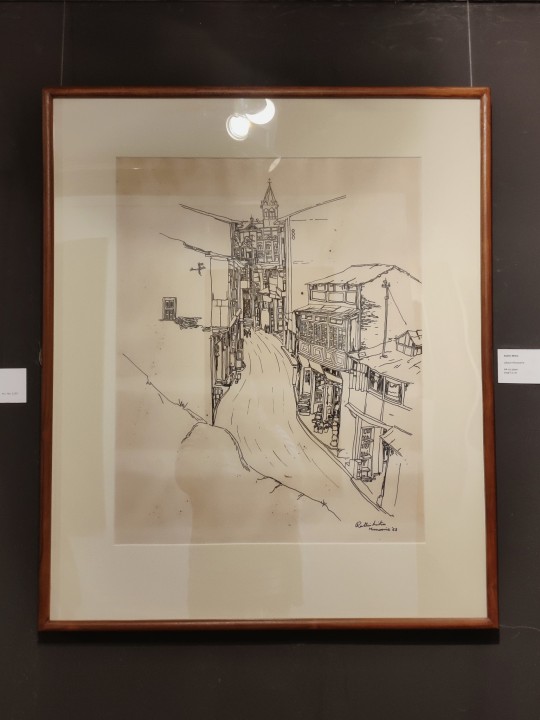
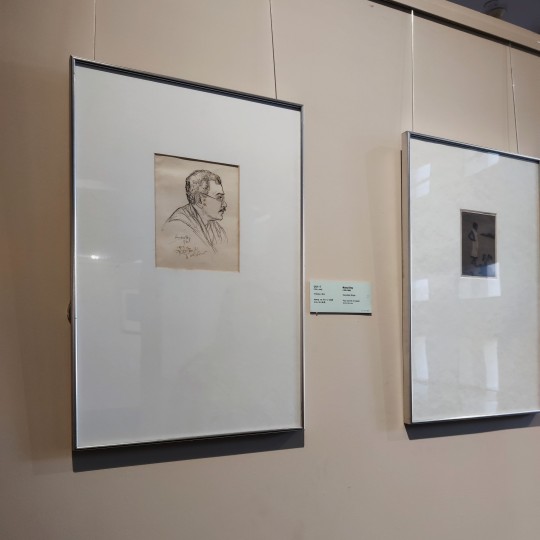
a few favorites from NGMA. 🪞🕯️🤍
#ngma#national gallery of modern art#jaipur house#delhi#delhigram#دہلی#artblr#modern art#gogi saroj pal#dhan raj bhagat#rathin mitra#mukul dey#studyblr#booklr#dark academia#light academia#light academia aesthetic#dark academia aesthetic#art academia#studyblog#art blog#book blog#mine
16 notes
·
View notes
Text






National gallery of modern art
The National Gallery of Modern Art (NGMA) is a renowned institution that showcases modern and contemporary art in various forms, from paintings and sculptures to multimedia installations. It's a great place to explore and appreciate the evolution of art over time.
(P.C- Insha Rana)
6 notes
·
View notes
Text

Self-portrait (1930) by Amrita Sher-Gil. National Gallery of Modern Art, New Delhi.
#amrita sher gil#national gallery of modern art#india#indian artist#indian painter#female painter#female artist#20th century art#20th century#hungarian art#hungarian painter#europe#modernism#modernist art#modernist painter#new delhi
0 notes
Text

Neeraj Gupta is with Lieutenant Governor of Delhi, Vinai Kumar Saxena in Buddha Garden Delhi
#neeraj gupta#National Gallery of Modern Art#sculpture artist#neeraj gupta buddha jayanti park#buddha garden delhi#Vinai Kumar Saxena in Buddha Garden Delhi
0 notes
Text


From Rome's National Gallery of Modern Art
Pictures by @princess-kaldor
0 notes
Text
A peek into Air India’s magnificent collection of art
Air India recently displayed a series of art works, meticulously collected over 80 years, at its booking offices, lounges, and pavilions across the globe. The collection gives travellers a glimpse into India’s rich artistic heritage.
Air India pavilions across the world dazzled with displays of gold zari embroidered and woven textiles, gilded Tanjore paintings, polychrome wooden temple…
View On WordPress
#air india art collection#air india art exhibition#air india news#air india vinatge art#National Gallery of Modern Art#National Gallery of Modern Art mumbai
0 notes
Link
The National Gallery of Modern Art (NGMA) will now house the precious collection ‘Maharaja Collection’ of Air India artworks. The collection will be displayed before art-lovers in a soon to be brought out schedule. It will also be opened to audiences abroad through innovative digital interfaces.
0 notes
Text

The Water-Lily Pond (1899)
🎨 Claude Monet
🏛️ The National Gallery
📍 London, United Kingdom
For Monet, gardens offered a refuge from the modern urban and industrial world, although he and his fellow garden enthusiasts benefited from modern advances in botanical science that were creating new hybrid flowers in a wide choice of shapes and colours that could be produced on an almost industrial scale. He made modest gardens in the homes he rented in Argenteuil and Vetheuil in the 1870s, but from 1883, when he moved to a rented house in Giverny, about 50 miles to the west of Paris, he had more scope to indulge his passion for plants. He became a dedicated gardener with an extensive botanical knowledge, and sought the opinions of leading horticulturalists. As Monet’s career flourished his increasing wealth enabled him to fund what became a grand horticultural enterprise: by the 1890s he was employing as many as eight gardeners.
Monet began by refashioning the garden in front of the house, the so-called ‘Clos Normand’, replacing the existing kitchen garden and orchard with densely planted colourful flower beds that were filled with blooms throughout the seasons. He was able to buy the house in 1890, and three years later he purchased an adjacent plot of land next to the river Epte beyond the railway line at the edge of his property. The plot had a small pond with arrowhead and wild water lilies, which he wanted to turn into a water garden with a larger lily pond ‘both for the pleasure of the eye and for the purpose of having subjects to paint’.
The idea may have occurred to him after he had seen the water garden at the 1899 Exposition Universelle in Paris created by the grower Joseph Bory Latour-Marliac, who bred the first colourful hardy waterlilies. Monet began by requesting permission from the Prefect of the Eure to dig irrigation channels from the Ru – a branch of the Epte – to feed his pond, but the Giverny villagers objected, fearing it would contaminate the water and that the foreign plants would poison their cattle. Monet was furious, but three months later permission came through and he began to enlarge the existing pond, replacing the wild water lilies with Latour-Marliac hybrids available in yellows, pinks, whites and violets.
The pond was enlarged on further occasions – in 1901 and 1904 – tripling the size of the water garden. Together with the flower garden on the other side of the railway track it became the principal preoccupation of the last 26 years of Monet’s life. While the Clos Normand garden was laid out along fairly traditional lines, harking back to the formal French gardens of seventeenth-century Europe, with a central alleyway and geometrically arranged beds, the water garden was more Eastern in inspiration. Its less regimented, more natural design and more muted colours created a quieter, meditative atmosphere. Monet erected a Japanese bridge over the western end of the pond that took its inspiration from the bridges in ukiyo-e Japanese prints. He was a keen collector of these prints and he owned a copy of Hiroshige’s Wisteria at Kameido Tenjin Shrine (1856), one of the many prints that features a curved bridge. In a more general sense, the water garden reflected Monet’s admiration for the Japanese appreciation of nature.
Monet had to wait for his water garden to mature before he could begin to paint it in earnest. As he later recalled: ‘It took me some time to understand my water-lilies. It takes more than a day to get under your skin. And then all at once, I had the revelation – how wonderful my pond was – and reached for my palette. I’ve hardly had any other subject since that moment.’ In total, Monet painted 250 canvases of his water garden. Around 200 of these represent water lilies floating on the surface of the water, while the remainder also show the Japanese bridge, the weeping willow trees and wisteria and the irises, agapanthus and day lilies on its banks. In all these pictures Monet was painting a subject that was already ‘pictorial’ – a landscape that had been carefully composed according to his personal aesthetic. The National Gallery has three further paintings of the water garden :Water-lilies, setting sun; Irises; and Water-lilies.
Monet painted three views of the Japanese bridge in 1895, not long after it had been constructed, but then took a break from the subject, only returning to it in 1899. By now the pool was overhung by vegetation and surrounded by plants, but to judge from contemporary photographs it was never as enclosed as Monet painted it, and he exaggerated the feeling of claustrophobia. In December 1900 he exhibited 12 paintings at Durand-Ruel’s gallery in Paris, all of which showed more or less symmetrical views of the Japanese bridge.
In this painting, as in the others in the series, we are looking down onto the surface of the water, where the lily pads float into the distance, meeting the dense foliage on the far bank. Weeping willows are reflected in the pond and clumps of iris border its banks. The perspective seems to shift so that it is hard to find a single focal point; it is as though we are looking up at the bridge but down on the waterlilies. The picture, like the water itself, seems to oscillate between surface and depth. The mainly vertical reflections provide a counterpoint to the horizontal clumps of the lily pads. Different colours, applied with thick brushstrokes, are placed next to each other. This way of painting has more in common with Monet’s early Impressionist works than his more recent paintings of mornings on the Seine, where he had used softer, more blended strokes to convey hazy atmospheric effects.
The Japanese bridge series marked a turning point in Monet’s art. From now on his subjects were painted from an increasingly confined viewpoint, conveying the sense of an enclosed world. In later paintings of the pond, he would dispense with the banks and bridge altogether to focus solely on the water, the reflections and the water lilies. The culmination of Monet’s water lily paintings were the Grandes Dėcorations, 22 enormous canvases each over two metres high and totalling more than 90 metres in length, which he completed months before his death and donated to the French state. These are now on permanent display in two oval rooms in the Musée de l’Orangerie, Paris.
#The Water-Lily Pond#1899#Claude Monet#The National Gallery#London#United Kingdom#oil painting#painting#oil on canvas#Modern art#Impressionism#french#art#artwork#art history
120 notes
·
View notes
Text
For #SaveTheElephantDay on #TwoForTuesday 🐘🐘:

Amrita Sher-Gil (Hungarian-Indian, 1913-1941)
Two Elephants, 1940
Oil on Canvas, 46cm X 54.3cm
National Gallery of Modern Art, New Delhi, India
#animals in art#animal holiday#20th century art#elephant#elephants#pair#modern art#painting#oil painting#1940s#women artists#Indian art#Amrita Sher-Gil#National Gallery of Modern Art New Delhi#Two for Tuesday#Save the Elephant Day
216 notes
·
View notes
Text

Paul Klee
Contemplation at breakfast. 1925
#paul klee#art on paper#expressionism#surrealism#pictorial abstraction#modern art#swiss artist#museum berggruen - national gallery
74 notes
·
View notes
Text



I went to the National Sculpture Gallery yesterday, here's some highlights.
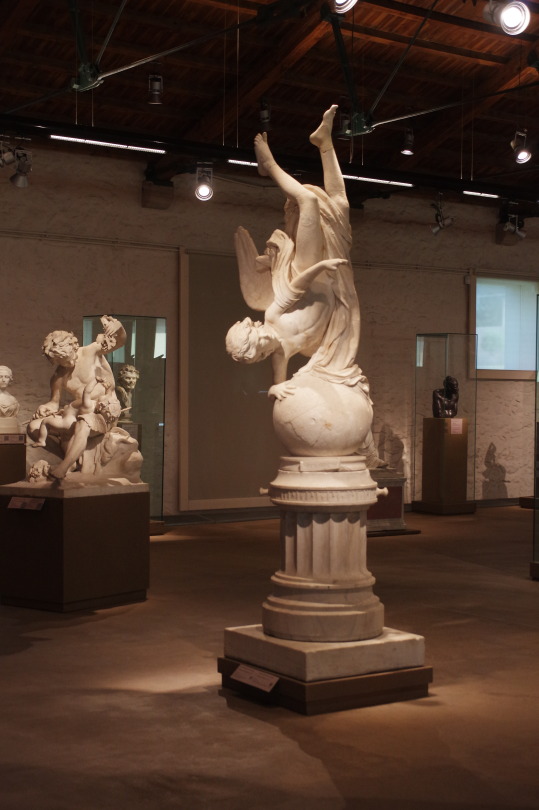
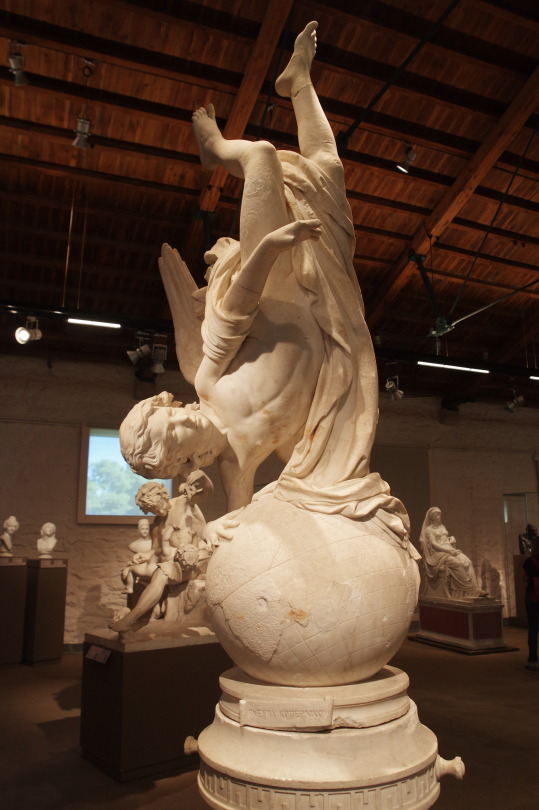
The spirit of Copernicus (1877), by Georgios Vroutos.

Satyr playing with Eros (1877), by Yannoulis Halepas.

Nana (1896-1897), by Georgios Bonanos - inspired by the heroine of Émile Zola's Nana.
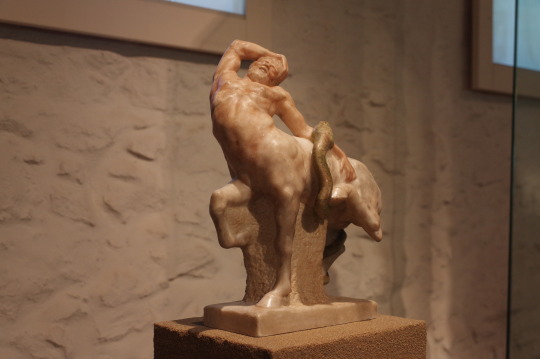
Centaur (1901), by Thomas Thomopoulos, who is also featured here on this blog, with a stunning sculpture of a broken angel at the cemetery of Anastasi.
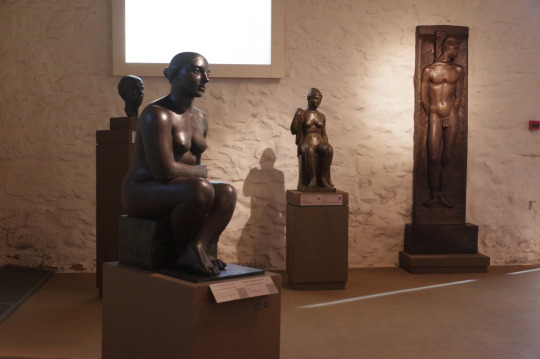
Stout seated woman (1948), by Michael Tombros.

The Eraser (1980), by Gabriela Simossi.

The hunter (from the series States of Mind, 2002), by Pantelis Chandris.
And a sculpture by René Magritte, The Therapeutist (Healer) (1967, a gift by Alexandros Iolas, a known art collector and artist promoter of the Greek world.
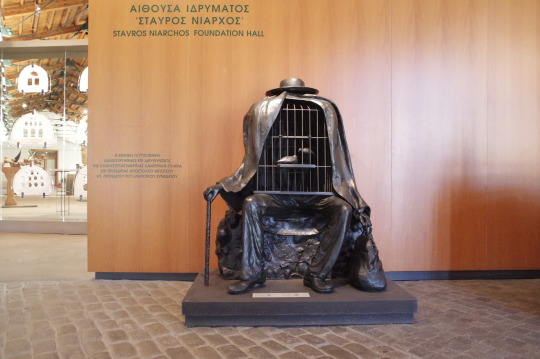
#Greece#national sculpture gallery#greek national sculpture gallery#alsos stratou#sculpture#marble#marble statues#bronze statues#greek modern art#modern art#art#19th century art#19th century greek art#20th century greek art#20th century art#rene magritte#thomas thomopoulos#Ελλάδα#ελληνική τέχνη#εθνική γλυπτοθήκη#γλυπτική#σύγχρονη γλυπτική#αγάλματα#γουδή#άλσος στρατού
58 notes
·
View notes
Text

Bridget Riley, b.1931
By Ida Kar
Bridget Riley gained international recognition for her style of abstract painting known as Op Art, creating dazzling three-dimensional effects.
In this portrait, she is shown immersed within her immersive black and white painted artwork on aluminium, Continuum on exhibition at Gallery One in London in 1963.
Following Riley's first solo exhibition the previous year, the art critic David Sylvester wrote in the New Statesman that her paintings: 'symbolise, dramatically, an interplay between feelings of composure and anxiety'.
National Portrait Gallery, London
#english imagination#art#english culture#albion#english art#england#20th century#english artist#bridget riley#women’s art#women in art#english women#op art#modern art#London#national portrait gallery
7 notes
·
View notes
Text

Edvard Munch, Ashes. 1895
i felt our love lying on the earth like a heap of ash
#edvard munch#ashes#1800s#1890s#modern#expressionism#national gallery of norway#paintings#art history#fine art
47 notes
·
View notes
Text

Bride's Toilet (1937) by Amrita Sher-Gil. National Gallery of Modern Art, India.
#amrita sher gil#national gallery of modern art#india#indian artist#indian painter#female painter#female artist#20th century art#20th century#hungarian art#hungarian painter#europe#modernism#modernist art#modernist painter#new delhi
0 notes